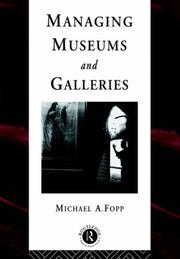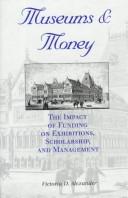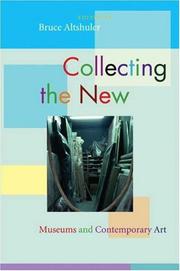| Listing 1 - 10 of 41 | << page >> |
Sort by
|
Book
ISBN: 9782877725279 9782111282803 2877725278 Year: 2013 Publisher: Paris: Errance,
Abstract | Keywords | Export | Availability | Bookmark
 Loading...
Loading...Choose an application
- Reference Manager
- EndNote
- RefWorks (Direct export to RefWorks)
Une signalétique bien conçue, c'est-à-dire inventive tout en étant respectueuse des règles de l'art, représente un vecteur discret mais fort de la communication d'un site, d'un monument, d'un musée ou d'une exposition. Elle désigne, nomme, classe et structure, par la mobilisation d'indications spécifiques, les différents éléments de l'offre, qu'ils soient d'ordre cognitif ou esthétique ou qu'ils relèvent du confort et des services associés à la visite. Mais une signalétique homogène, bien conçue et mise en place dans des emplacements judicieusement choisis, devient dans les faits un système cohérent qui structure et organise les parcours. Sa trame continue et homogène devient, ni plus ni moins, qu'un mode d'aménagement graphique de l'espace. Qu'il s'agisse des repères directionnels ou de dispositifs de signalétique conceptuelle, cet ouvrage propose, dans une première et deuxième parties, les premiers éléments publiés en langue française d'une théorie communicationnelle de ce système essentiel. Une troisième partie, plus pratique, rappelle quelles sont les étapes de conception et de mise en place d'une signalétique dans un équipement culturel. Cet ouvrage s'adresse, d'une part, aux professionnels qui mettent en place de nouveaux aménagements ou dirigent des équipements patrimoniaux et culturels dans lesquels visiteurs et usagers se perdent et s'égarent à longueur de temps, et d'autre part, aux chercheurs ou aux étudiants qui analysent les modalités de reconnaissance par les différentes catégories de public des monuments, des musées, des expositions, ainsi que des centres et des parcours d'interprétation.
Corporate image --- Arts facilities --- Entreprises --- Equipements culturels --- Signals and signaling --- Image --- Signaux et signalisation --- Arts facilities - Museum exhibits - Handbooks, manuals, etc --- Musées --- Signalisation --- 037 --- Signalisation.
Book
ISBN: 0030503868 Year: 1979 Publisher: New York Praeger Publishers
Abstract | Keywords | Export | Availability | Bookmark
 Loading...
Loading...Choose an application
- Reference Manager
- EndNote
- RefWorks (Direct export to RefWorks)
museology --- Museology --- Art --- art museums [buildings] --- Art museums --- Education --- Art collections --- Art galleries --- Galleries, Art --- Galleries, Public art --- Picture-galleries --- Public art galleries --- Public galleries (Art museums) --- Arts facilities --- Museums --- Administration --- Economic aspects --- Educational aspects --- Galleries and museums

ISBN: 0415094976 0415094968 9786610329809 1134867697 0203042956 1280329807 0203303962 9780415094962 9780415094979 9780203042953 9780203303962 9781134867691 9781134867646 9781134867684 1134867689 Year: 1997 Publisher: London New York Routledge
Abstract | Keywords | Export | Availability | Bookmark
 Loading...
Loading...Choose an application
- Reference Manager
- EndNote
- RefWorks (Direct export to RefWorks)
The current economic climate, coupled with an all embracing desire for museums to be respondent to 'the market' make a proper grounding in management essential. The 'bottom line' is one of the most powerful measures of management performance. Museums and galleries invariably have a neutral bottom line, they are not set up to make a profit and many of them are constrained by governmental accounting rules and charity legislation. Managing these organisations is difficult and this book tackles the issues that make it easier. Managing the Museum examines the highly sophisticated princ
Business management --- Museology --- Museums --- Art museums --- Management --- Art --- Art collections --- Art galleries --- Galleries, Art --- Galleries, Public art --- Picture-galleries --- Public art galleries --- Public galleries (Art museums) --- Galleries and museums --- Arts facilities --- Public institutions --- Cabinets of curiosities
Book
ISBN: 9782343044187 234304418X Year: 2014 Publisher: Paris Harmattan
Abstract | Keywords | Export | Availability | Bookmark
 Loading...
Loading...Choose an application
- Reference Manager
- EndNote
- RefWorks (Direct export to RefWorks)
Arts facilities --- People with disabilities --- Equipements culturels --- Handicapés --- Barrier-free design --- Legal status, laws, etc. --- Accessibilité aux handicapés --- Droit --- #SBIB:39A9 --- #SBIB:340H10 --- #SBIB:340H20 --- Medische antropologie / gezondheid / handicaps --- Sociaal recht, algemeen --- Burgerlijk recht --- Handicapés --- Accessibilité aux handicapés
Book
ISBN: 3781402916 Year: 1990 Publisher: München Klinkhardt & Biermann
Abstract | Keywords | Export | Availability | Bookmark
 Loading...
Loading...Choose an application
- Reference Manager
- EndNote
- RefWorks (Direct export to RefWorks)
Art museums --- -Art --- Art --- Art collections --- Art galleries --- Galleries, Art --- Galleries, Public art --- Picture-galleries --- Public art galleries --- Public galleries (Art museums) --- Arts facilities --- Museums --- History --- -Galleries and museums --- -History --- -Art museums --- Galleries and museums
Book
ISBN: 1873542046 Year: 2000 Publisher: London One-Off Press
Abstract | Keywords | Export | Availability | Bookmark
 Loading...
Loading...Choose an application
- Reference Manager
- EndNote
- RefWorks (Direct export to RefWorks)
Museology --- anno 1900-1999 --- anno 1800-1899 --- anno 1700-1799 --- Art museums --- Art --- Art collections --- Art galleries --- Galleries, Art --- Galleries, Public art --- Picture-galleries --- Public art galleries --- Public galleries (Art museums) --- Arts facilities --- Museums --- History --- Galleries and museums
Book
ISBN: 9789462702424 946270242X 9789461663696 9461663692 Year: 2020 Volume: 29 Publisher: Leuven
Abstract | Keywords | Export | Availability | Bookmark
 Loading...
Loading...Choose an application
- Reference Manager
- EndNote
- RefWorks (Direct export to RefWorks)
Photography was long regarded as a "middlebrow" art by the art institution. Yet, at the turn of the millennium it became the hot, global art of our time. In this book - part institutional history, part account of shifting photographic theories and practices - Alexandra Moschovi tells the story of photography's accommodation in and as contemporary art in the art museum. Archival research of key exhibitions and the contrasting collecting policies of MoMA, Tate, the Guggenheim, the V&A, and the Centre Pompidou offer new insights into how art as photography and photography as art have been collected and exhibited since the 1930s. Moschovi argues that this accommodation not only changed photography's status in art, culture, and society, but also played a significant role in the rebranding of the art museum as a cultural and social site.
Art museums --- Photography, Artistic --- Photography museums --- Photography --- Art museums. --- Art --- Art collections --- Art galleries --- Galleries, Art --- Galleries, Public art --- Picture-galleries --- Public art galleries --- Public galleries (Art museums) --- Arts facilities --- Museums --- Galleries and museums --- Museology --- photography [process] --- fotografiegeschiedenis --- Exhibitions
Book
ISBN: 9781606061206 1606061208 Year: 2012 Publisher: Los Angeles Getty publications
Abstract | Keywords | Export | Availability | Bookmark
 Loading...
Loading...Choose an application
- Reference Manager
- EndNote
- RefWorks (Direct export to RefWorks)
"This multiauthor book discusses the evolution of the first public museums of art throughout Europe in the eighteenth and early nineteenth centuries and the standards these early museums set for all subsequent institutions of their kind"--Provided by publisher.
History of civilization --- Museology --- Public buildings --- anno 1700-1799 --- anno 1800-1899 --- Europe --- Art museums --- Art --- History --- Musées --- Histoire --- Gestion des collections --- Musées --- Art collections --- Art galleries --- Galleries, Art --- Galleries, Public art --- Picture-galleries --- Public art galleries --- Public galleries (Art museums) --- Arts facilities --- Museums --- Galleries and museums

ISBN: 0253332052 9780253332059 Year: 1996 Volume: *1 Publisher: Bloomington Indianapolis Indiana University Press
Abstract | Keywords | Export | Availability | Bookmark
 Loading...
Loading...Choose an application
- Reference Manager
- EndNote
- RefWorks (Direct export to RefWorks)
Art museums --- Art patronage --- Art --- Art collections --- Art galleries --- Galleries, Art --- Galleries, Public art --- Picture-galleries --- Public art galleries --- Public galleries (Art museums) --- Arts facilities --- Museums --- Finance --- Management --- Galleries and museums --- United States --- Art museums - United States - Management. --- Art museums - United States - Finance.

ISBN: 0691119406 1400849357 9781400849352 0691133735 9780691133737 9780691119403 9780691133737 129999122X Year: 2005 Publisher: Princeton, New Jersey
Abstract | Keywords | Export | Availability | Bookmark
 Loading...
Loading...Choose an application
- Reference Manager
- EndNote
- RefWorks (Direct export to RefWorks)
Collecting the New is the first book on the questions and challenges that museums face in acquiring and preserving contemporary art. Because such art has not yet withstood the test of time, it defies the traditional understanding of the art museum as an institution that collects and displays works of long-established aesthetic and historical value. By acquiring such art, museums gamble on the future. In addition, new technologies and alternative conceptions of the artwork have created special problems of conservation, while social, political, and aesthetic changes have generated new categories of works to be collected. Following Bruce Altshuler's introduction on the European and American history of museum collecting of art by living artists, the book comprises newly commissioned essays by twelve distinguished curators representing a wide range of museums. First considered are general issues including the acquisition process, and collecting by universal survey museums and museums that focus on modern and contemporary art. Following are groups of essays that address collecting in particular media, including prints and drawings, new (digital) media, and film and video; and national- and ethnic-specific collecting (contemporary art from Asia, Africa, and Latin America, and African-American art). The closing essay examines the conservation problems created by contemporary works--for example, what is to be done when deterioration is the artist's intent? The contributors are Christophe Cherix, Vishakha N. Desai, Steve Dietz, Howard N. Fox, Chrissie Iles and Henriette Huldisch, Pamela McClusky, Gabriel Pérez-Barreiro, Lowery Stokes Sims, Robert Storr, Jeffrey Weiss, and Glenn Wharton.
Art, Modern --- Art museums --- Collectors and collecting --- Collection management --- Art --- Art collections --- Art galleries --- Galleries, Art --- Galleries, Public art --- Picture-galleries --- Public art galleries --- Public galleries (Art museums) --- Modern art --- Galleries and museums --- Museums --- Arts facilities --- Art [Modern ] --- 20th century --- United States --- 21st century --- Nieuwe Ploeg (Group of artists)
| Listing 1 - 10 of 41 | << page >> |
Sort by
|

 Search
Search Feedback
Feedback About UniCat
About UniCat  Help
Help News
News